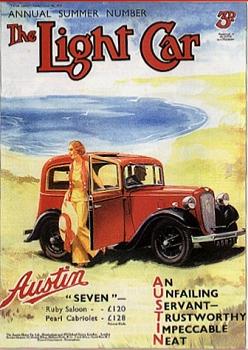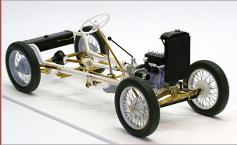



JRH SCALE CARS
JRH SCALE CARS









TRACTION AVANT

1935 Austin Seven - Prototype

The Austin Seven was introduced in 1922 and was in production until 1939. Although it went through many iterations and improvements, its goal was always to be a car the average working family could afford. In the mid 1930s, when a Rolls-Royce sold for over £2,500, the Seven sold for just over £100. Almost 300,000 were produced.
Why This Vehicle?
There were several reasons for attempting a model of this car.
First, although the Seven was very basic, it introduced motoring to the masses and helped establish the British ritual of the 'Sunday drive'. The Seven gave families freedom and the opportunity to explore which were seismic in their impact. It was as important in the UK as the Model T was in the USA.
Second, the Seven is an interesting contrast to the opulence and exclusivity of the Rolls-Royce Phantom II. It's the other end of the scale, so to speak. But, nevertheless, just as iconic. Indeed, Austin liked to describe the Seven as 'the best small car in the world'.
Third, my mother owned an Austin Seven just prior to WWII, so there's an element of nostagia in building this particular model.
1935 Austin Seven Ruby
The Ruby was the Austin Seven version produced from 1934 onwards. So it seems like the appropriate contrast to the Figoni & Falaschi RR Phantom II which was completed in 1937. It is also likely that this is the version my mother owned.
There were several reasons for attempting a model of this car.
First, although the Seven was very basic, it introduced motoring to the masses and helped establish the British ritual of the 'Sunday drive'. The Seven gave families freedom and the opportunity to explore which were seismic in their impact. It was as important in the UK as the Model T was in the USA.
Second, the Seven is an interesting contrast to the opulence and exclusivity of the Rolls-Royce Phantom II. It's the other end of the scale, so to speak. But, nevertheless, just as iconic. Indeed, Austin liked to describe the Seven as 'the best small car in the world'.
Third, my mother owned an Austin Seven just prior to WWII, so there's an element of nostagia in building this particular model.
1935 Austin Seven Ruby
The Ruby was the Austin Seven version produced from 1934 onwards. So it seems like the appropriate contrast to the Figoni & Falaschi RR Phantom II which was completed in 1937. It is also likely that this is the version my mother owned.
A note on the magazine cover and the ad. The Ruby was first sold in August 1934 at a price of £120. In August 1935, the price was increased to £125.
Construction underway ....


Video

In the 1930s, Austin produced an advetorial promoting the vehicles in their range. Click here for a short video-only segment highlighting the Austin Seven.

Construction

Like the other models, this is in 1:8 scale.
The goal was to build an historically accurate model, reproducing almost every nut and bolt. Of necessity almost all of it would be scratch built, but some 3D printed parts would be used. A set of CAD drawings, essential for 3D printing, was the starting point. After acquiring the 3D printed parts, construction began.
The goal was to build an historically accurate model, reproducing almost every nut and bolt. Of necessity almost all of it would be scratch built, but some 3D printed parts would be used. A set of CAD drawings, essential for 3D printing, was the starting point. After acquiring the 3D printed parts, construction began.














